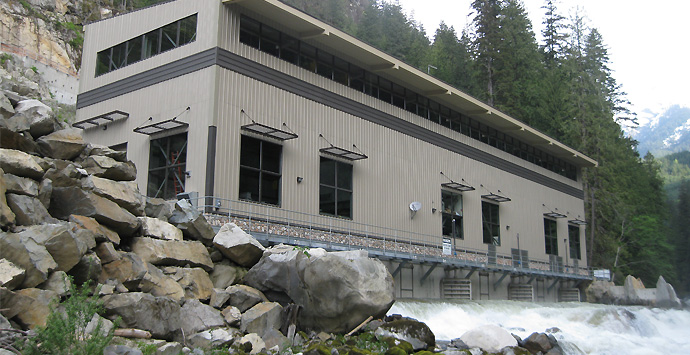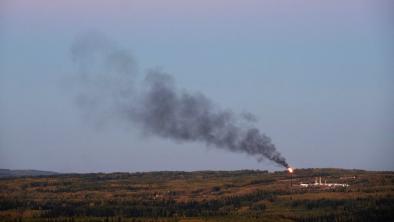Critics launch court action, release e-mail scathing B.C.’s environmental assessment process
Vancouver Sun

B.C’s environmental assessment process is so flawed it cannot hope to fill the void created by the federal government walking away from assessments of almost 500 projects, critics charged Wednesday, while launching court action and releasing a scathing internal government email.
Ecojustice went to B.C. Supreme Court seeking a judicial review of the province’s failure to conduct a formal environmental assessment on the Holmes hydro power project near McBride.
The legal action, taken on behalf of David Suzuki Foundation and Watershed Watch Salmon Society, argues that 10 linked hydro plants will together generate 85 megawatts of electricity.
But because no individual plant would generate more than 50 megawatts — the threshold for triggering an environmental assessment — none was ordered.
The provincial government declined to comment since the matter is before the courts.
The David Suzuki Foundation also released to The Vancouver Sun a two-page internal email written by Erin Stoddard, a Surrey-based provincial ecosystems biologist, to his superiors over fisheries concerns in the run-of-river hydro sector. The foundation did not say how it obtained the email, only that it didn’t come from Stoddard.
Stoddard wrote the email on March 15, 2012, following a Vancouver Sun story March 10 showing repeated fish kills at run-of-river hydro projects on Ashlu Creek and the lower Mamquam River, both near Squamish.
In his email, Stoddard states that run-of-river projects are being “proposed, approved and constructed in more sensitive fish habitats” and that “in several situations, the levels of proposed or realized impacts are not sustainable.”
The majority of such projects have not been adequately assessed for their impacts on fish, he wrote.
Stoddard also complained about “rampant” biased advice from professionals associated with run-of-river projects.
“It appears that likely due to the pressure that they face, and the rapid expansion of the industry, professional biologists are being forced to compromise their ethics and provide biased opinions. This is likely also a consequence of the industry and their professionals not clearly understanding the roles, responsibilities and accountabilities of professional biologists in all aspects.”
He later added: “There is no effective means for the College [of Applied Biology] to hold professional biologists accountable for their biased advice or mistakes.”
College president Brian Churchill could not immediately be reached to comment.
Stoddard noted the construction and commission of projects have “not been well managed” and that “available best practices are inadequate and inappropriately applied or interpreted for the mitigation of impacts to fish and fish habitat” associated with such projects.
He added that provincial staff in the south coast region have “significantly inadequate resources” to manage run-of-river projects, “that enforcement action is minimal, and that “there has been virtually no accountability for unexpected impacts to fish and fish habitat.”
B.C.’s auditor-general in 2011 also criticized the provincial environmental assessment process for failing to oversee approved projects.
John Werring, aquatic habitat specialist for the David Suzuki Foundation, said the email shows that the province is doing a poor job with its environmental assessments, and cannot pick up the slack from the federal government’s scaling back of its own assessments.
The province lacks capacity to “monitor most projects for compliance,” or enforce permit conditions, he said.
Derek Sturko, associate deputy minister with the B.C. Environmental Assessment Office, said in an email from Victoria that the “projects that are subject to environmental assessment undergo a rigorous process,” including of potentially adverse environmental, economic, social, health and heritage effects.
But he added: “Every project that might have an impact on the environment is reviewed by the appropriate government agencies (provincial and others) and either issued permits or not, based on the circumstances and the applicable laws. This is true even if the project does not meet the criteria for an environmental assessment.”
The Sun reported Wednesday that Stephen Harper’s Conservative government had washed its hands of environmental assessments of 492 projects in B.C. — including run-of-river projects — as a result of a revised Canadian Environmental Assessment Act, enacted on July 6. Provincial assessments of run-of-river projects will continue, where applicable.
The Canadian Environmental Assessment Agency said it won’t be involved with “numerous small, routine projects” that pose “little or no risk to the environment,” and instead plans to focus on those “project proposals that have a greater potential for significant adverse environmental effects in areas of federal jurisdiction.”
The vast majority of those 492 projects won’t qualify for a B.C. environmental assessment because they don’t meet provincial thresholds.
The criteria for triggering an environmental assessment in B.C. varies according to sector, including the following general examples for new projects:
- Hydroelectric power plants: more than 50 megawatts of electricity.
- Electric transmission lines: more than 40 kilometres of new right-of-way.
- Dams: more than 15 metres high or with a reservoir capacity of more than 10 million cubic metres of water.
- Coal mines: more than 250,000 tonnes per year.
- Mineral mines: more than 75,000 tonnes per year.
- Sand and gravel pits: more than 500,000 tonnes in one year or more than one million tonnes over four years.
- Pharmaceutical manufacturing: more than 50 tonnes per year of biopharmaceutical products or 200 tonnes of non-biopharmaceuticals.
- Sawmills: more than 750,000 board feet per day.
- Pulp mills and tire plants: all, regardless of size.
- Natural gas processing plants: more than 5.6 million cubic metres per day or sulphur emissions of more than two tonnes per day.
- Food processing: liquid waste discharge of more than 800 cubic metres per day.
Separate triggers apply to expansions of existing facilities.
Sturko said the province “continues to see growth in the resource sector and increased demand for projects requiring an environmental assessment” and insisted that the province has the necessary resources to undertake environmental assessments.
There are currently 66 positions in the B.C. Environmental Assessment Office, an increase of 11 over the previous year.
As well, the office has received $1.8 million in contingency funding for 2012-13, in addition to the permanent budget of $8.8 million, bringing the number of positions to 80.
The B.C. Environmental Assessment Office has conducted assessments of 162 projects in the last 20 years.
Of those: 75 per cent were approved; 14 per cent were refused, terminated or withdrawn; and 11 per cent did not require an environmental assessment.
The provincial assessment process has outright refused only two projects — Kemess North copper-gold mine in 2008, and the Ashcroft Ranch landfill project in 2011.
Photo: The Ashlu Creek hydro facility near Squamish, BC.


